As promised I’ll show a few of my plein air landscape sketches today. I’ve always been fond of landscape painting, and after nature journaling outdoors for a few years, I wanted to take my landscape sketches a step further.
So this summer I’ve tried to go out for plein air painting more often, and although I still find it really challenging, I have made slow progress on the subject. At least I think so.
And what a weird time to try this. We’re not under general lockdown here right now, but I usually go out very early so I don’t meet too many people. I want to get interesting light situations, mornings or evenings are ideal for that. When I’m sketching landscapes like this, it’s not about a nature phenomenon or a particular observation. For me it’s purely about the mood of a scene, and showing what interests me about that particular view. Essentially it’s like telling a story in an image. I used to be a landscape photographer, so this view on landscapes with a personal connection feels quite natural for me.
I have tried a few different things with my palette, from using dried and reactivated gouache (not so good results) to using fresh paint (which works best but wastes more paint) to a mix of watercolor pans and fresh gouache. I found that using opaque paint outside is much harder than using it in a controlled studio environment (no surprise there!), and it’s also a lot different from sketching, but this is probably just my relatively short experience with this type of paint with realistic subjects.
For now I’ve settled on watercolor with a bit of gouache white mixed in, this seems to work best and I can simply bring my small field palette that I also use for nature sketching. Since I’m often painting when it’s still very early, right after my gardening chores for the day, thick gouache strokes take very long to dry when the sun has just risen – this drove my insane in the first few paintings and I quickly had to find a way around it. Watercolor also has a bit of drying time, but I have a better grasp on manipulating drying paint layers than with gouache. It’s all a big learning journey! I’m sure I will return to plain gouache at some point, because I love the texture I can get with it.
The images I’ve scanned here for you are a mix of true plein air work and paintings either finished at home or entirely done from reference in the studio. Everyone needs to start somewhere, and I’m using every opportunity I can to get better at the technical part. I’m not very picky with my subject matter right now, so anything from an old vacation photo to a snapshot taken in the woods or in the park will do. Finding landscapes for painting is so much easier than finding a subject for a compelling landscape photograph. Photographers (at least the fine art guys) usually prefer overcast days because film and digital sensors can’t handle high contrast scenarios that well, and you will get unpleasant results if you just point your camera into the light and shadow mix under trees on a sunny day. It will never look as nice as it does when you look at it directly. You will have to modify the photo considerably (which is what lot of landscape photographers do). Painters, on the other hand, can get away with crazy lighting situations, and might even prefer them to overcast lighting. A scene with dappled light can be a wonderful subject. You just need to figure out how to paint it well, and that’s what I’m all about right now.
Enough talking, let’s start with the plein air sketchbook tour.
Here’s a video version of the sketchbook tour:
If you can’t see the video above, watch it here: Sketchbook Tour Plein Air Landscape Painting (July/August 2020)
You can see the almost abstract, flat quality of my very first plein air paintings – I was struggling with the setup and the drying times (gouache at 7am on a damp morning takes about 15 minutes to dry per layer), so I kept things very basic. I find painting with a full plein air setup (palette, brushes, water, something to hold my sketchbook, etc.) strangely nerve-wracking, much more than simply taking out my sketchbook and a pencil. I also found out that while I can hold a conversation while sketching without problems, I can’t really paint that well while I’m talking to someone. You would think this is roughly the same process, maybe I haven’t practiced it enough yet.
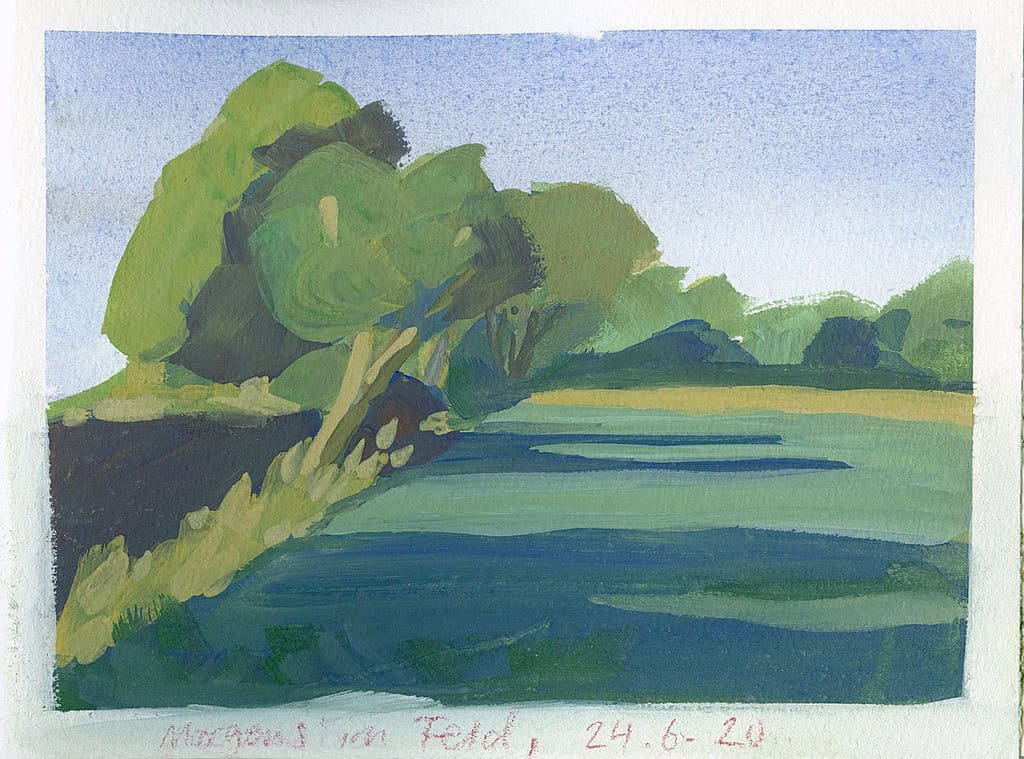
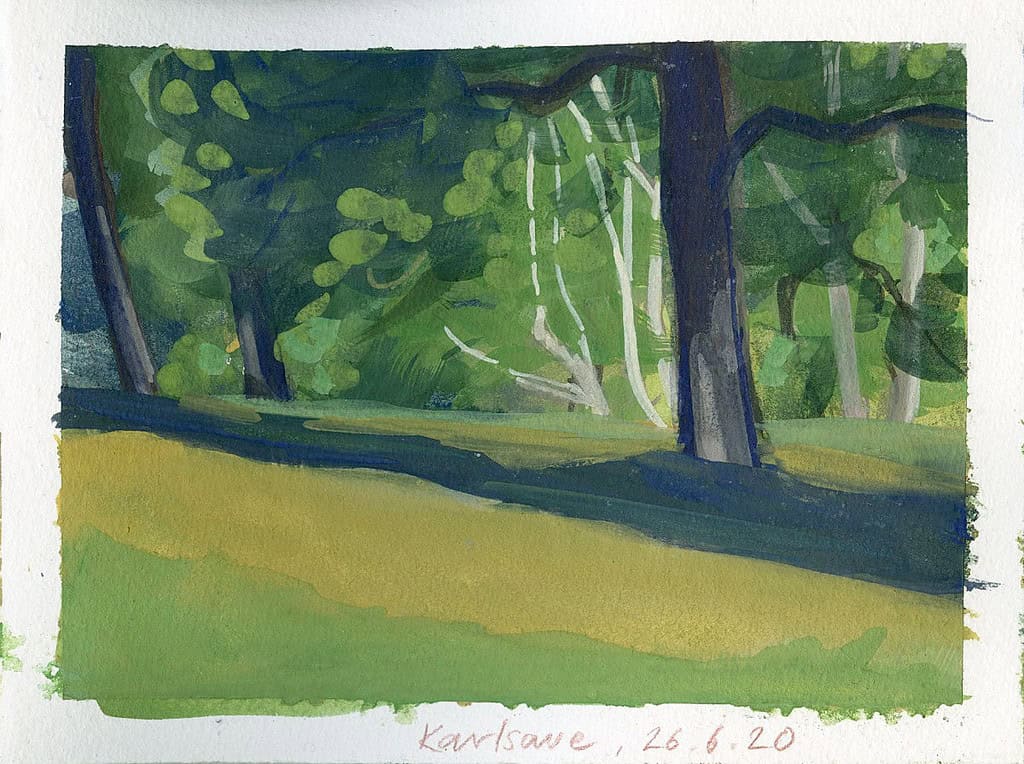
I always try to use big brushes to simplify the scene as much as possible. A bigger brush will keep you from rendering and noodling in details – what you want in landscape painting is an arrangement of simple shapes and forms that give your painting a structure. The rendering can come when these shapes are in place.
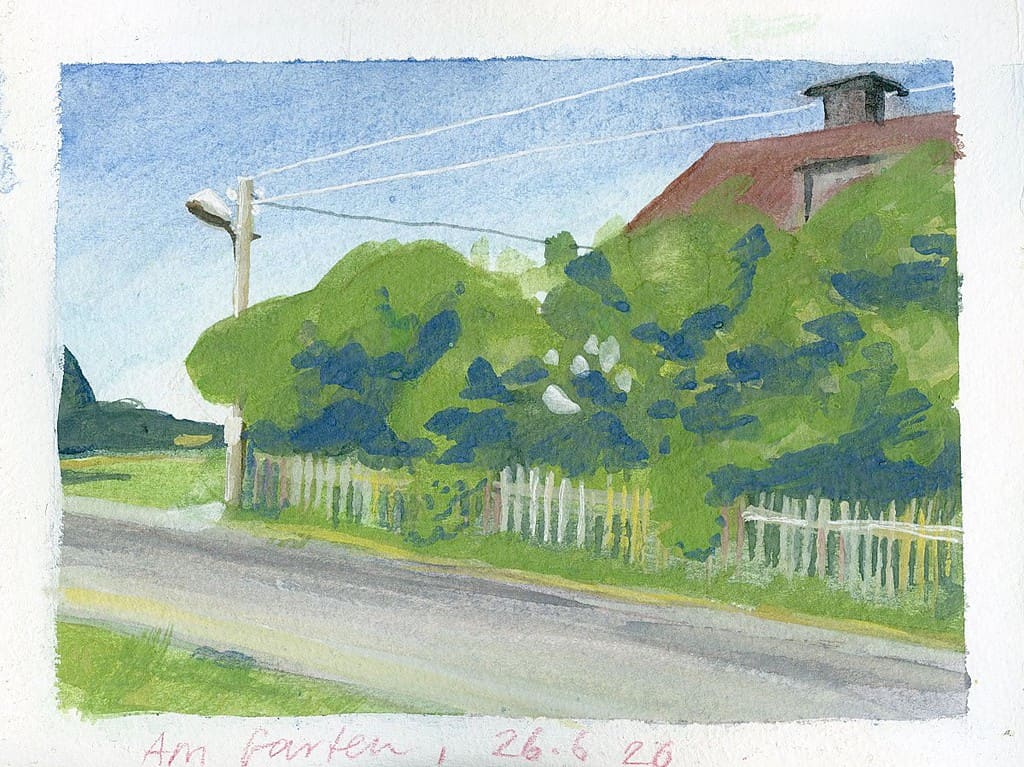
I’m still trying to find a balance between texture and detail, often when you have laid down a textured brush stroke you don’t need a lot of detail, and you’ll get a nice, abstracted little sketch. I try to keep my painting sessions under an hour, because by then the light has likely changed and the moment is gone.
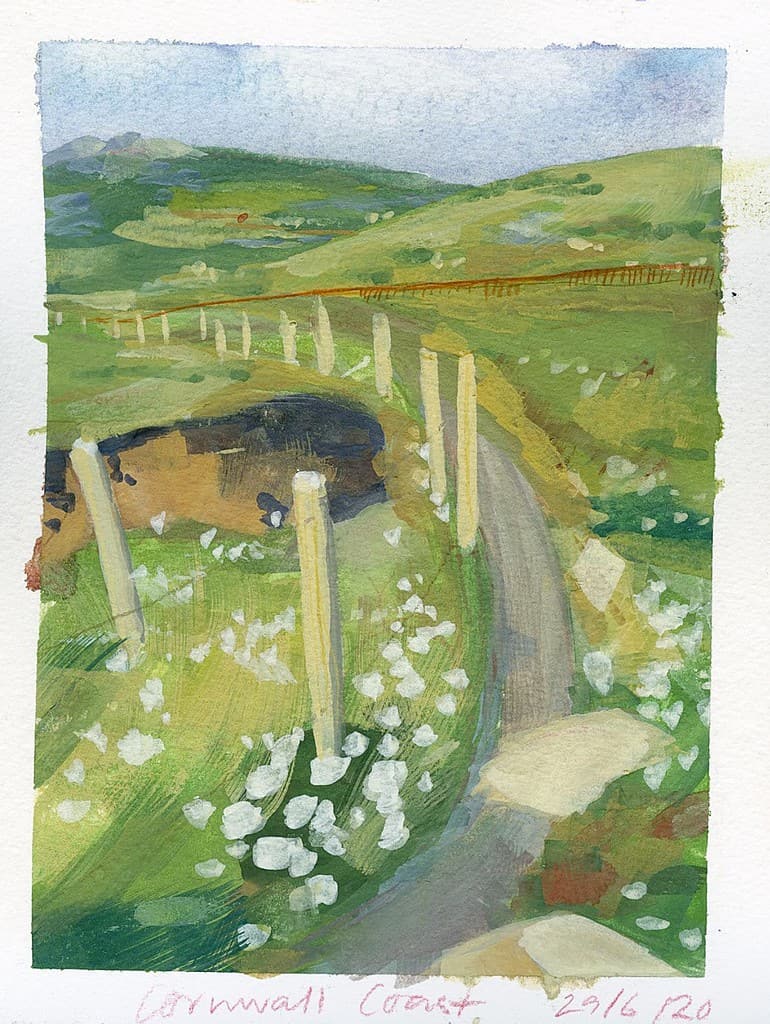
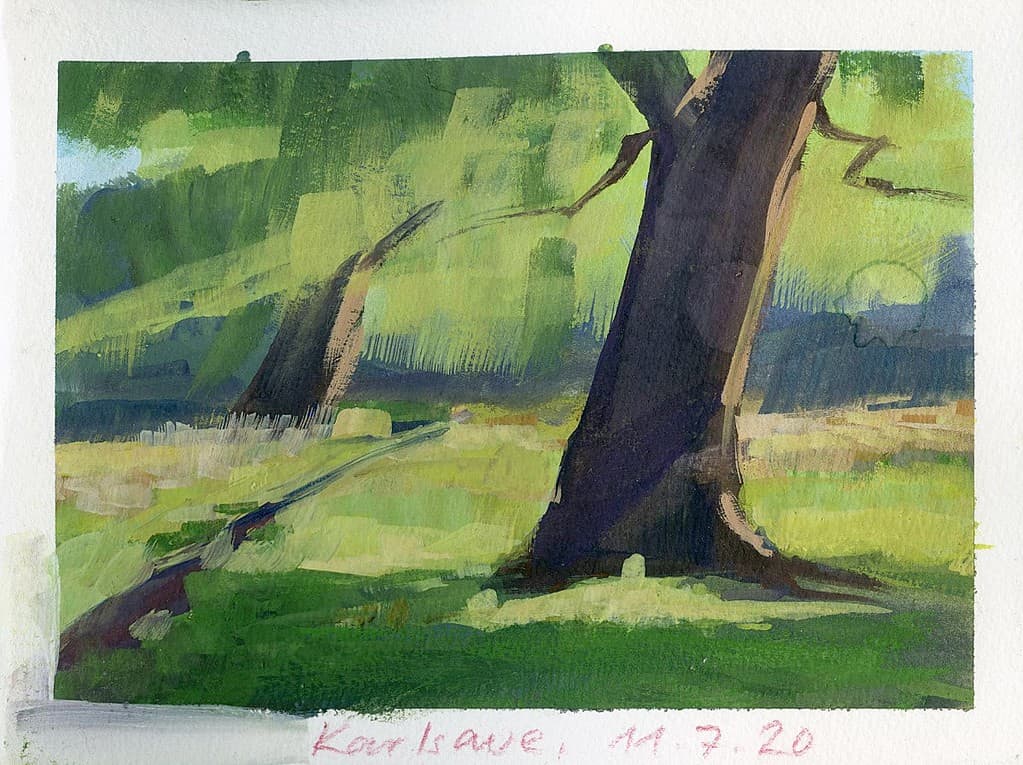

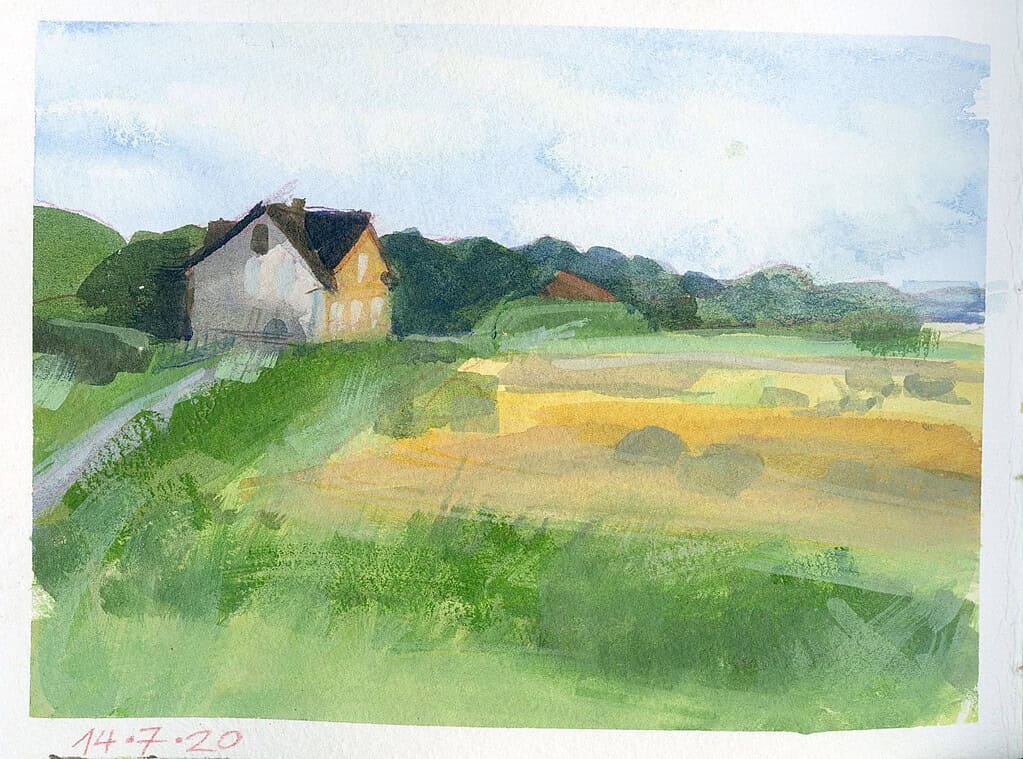
It really pays off to do black and white value studies, or small color studies, before you jump into a painting, even at this small sketchbook size. I don’t do this often enough. Basically if you have your values in the right place you can do whatever you want with color. Right values in a painting matter much more than laying down the exact colors. This is why you can (and should) exaggerate the color you see in a scene to paint the mood and atmosphere you want to convey.
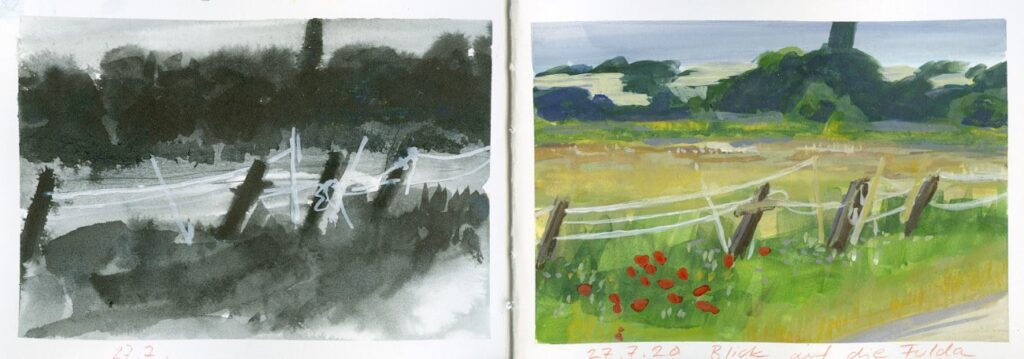

I’m still in the beginner’s stage of learning this, but in some of my more recent sketches you see what a big role lighting can play in the mood of a painting. You will not be able to “light” a scene by simply copying from a snapshot photo, you will need to modify what you see in reality into painterly logic. It takes a while to see the different colors and color temperature in a scene, and I’m still finding out how to effectively paint different light scenarios. It’s fun!

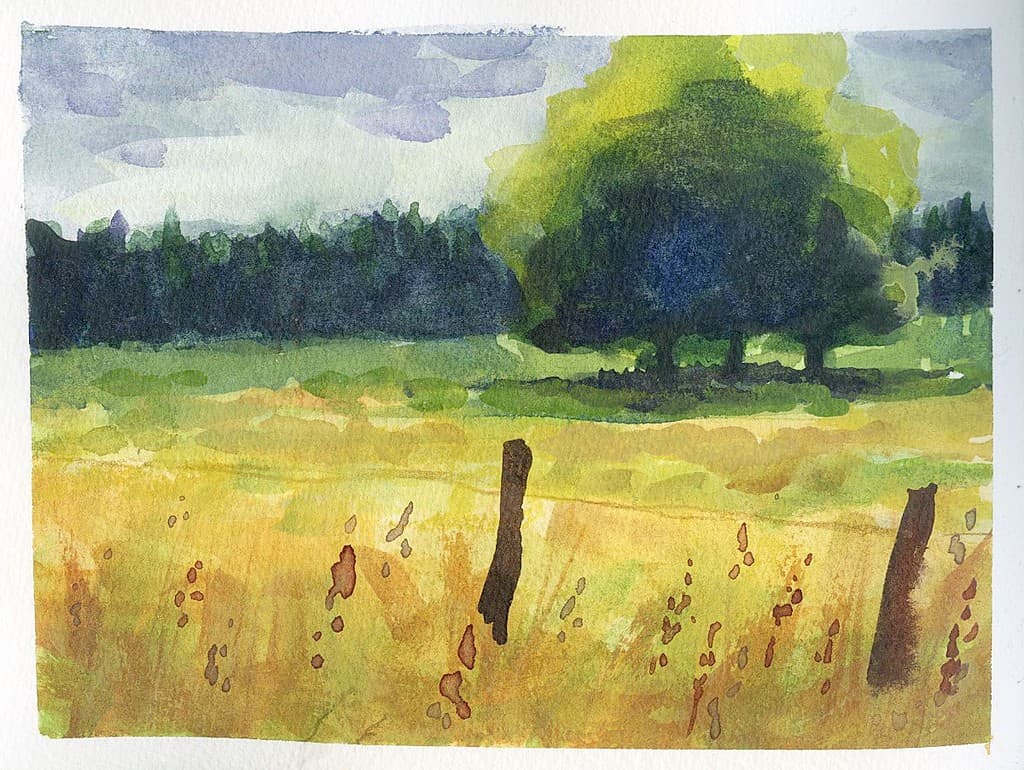
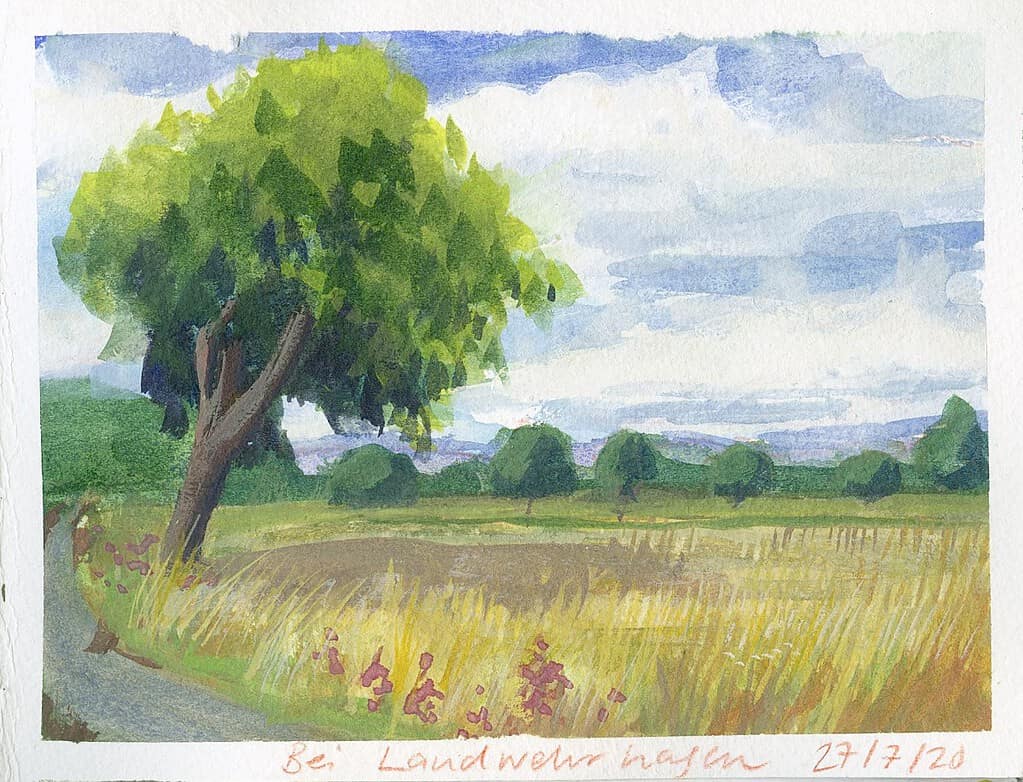
The last pictures are done in a new sketchbook with Arches hotpressed paper. It handles paint differently than the coldpressed paper I used before, and a lot of my struggles with the materials might have come from that particular paper. It’s not a bad paper per se, it just has very prominent cotton fibers that can hinder smooth brush strokes. Finding the right paper is difficult, and I keep switching papers from time to time, especially when using different techniques. Hotpressed paper can feel a bit slippery. With opaque gouache it doesn’t seem to matter that much which paper you use, I’ve had good results on cheap papers, and even on cardboard. With diluted watercolor you can feel and see the difference. On this hotpressed paper you can see my brush strokes get looser, everything has a sketchier quality.
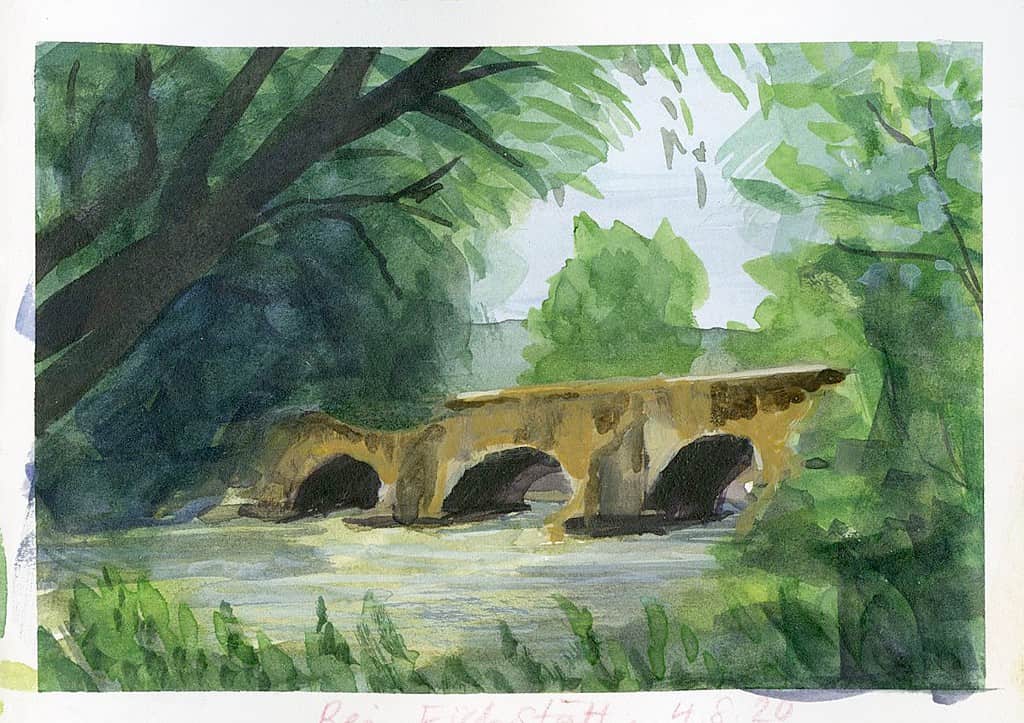
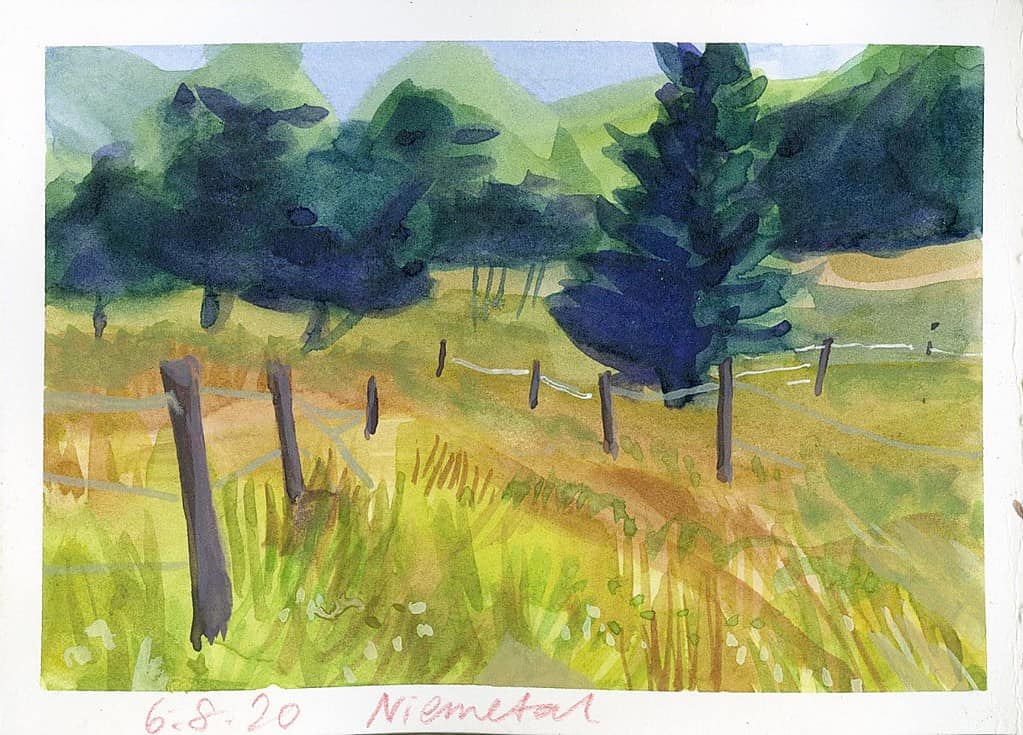
I hope you’ve enjoyed this insight into my plein air painting adventures. If there’s anything you’d like to know more about, let me know! I’m having a lot of fun learning this stuff, and I hope I can keep this new plein air painting routine active.

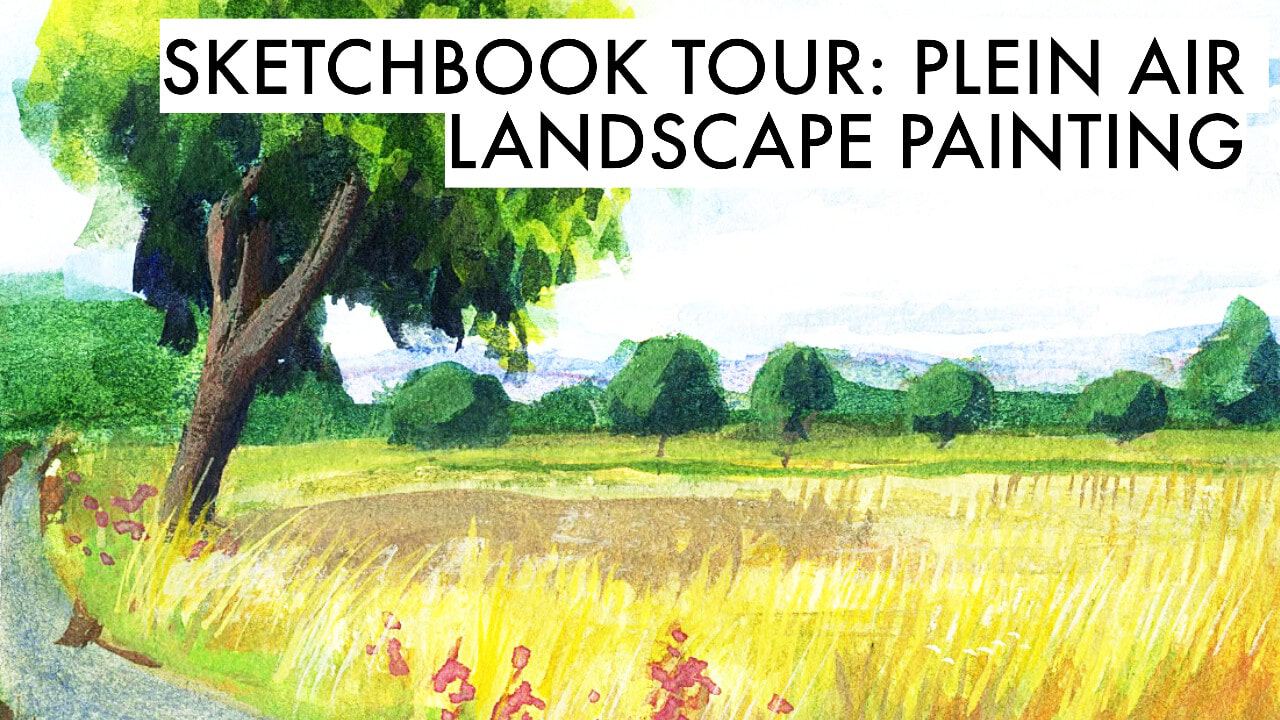

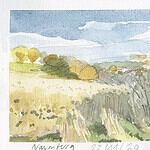
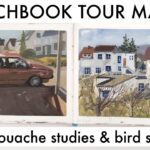
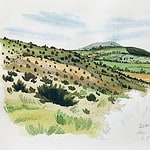
Great sketches and paintings. I find hot press hard to paint on (watercolour) but then I’m used to cold press. Thanks for sharing.
Thank you! I can totally understand that, hotpressed paper can be a bit weird.
Very nice. Your paintings are bold and really catch the light. My favorite is the bridge and water. I am currently painting butterflies in gouache to get a feel for it. You are right, it dries fast and not the same when you add water to it. Thank you for the tour.
Thank you for sharing your paintings and sketchbooks. I always enjoy seeing your work and I LOVE your writing and the way you are always learning and experimenting. I shared your site with our fine arts club (55+ community in the U.S.). Also your writings about dropping social media inspired me to do the same, and I already feel immensely better. Thank you, Julia.
Thank you so much Vicki! Great that quitting social media had a positive effect on you as well. And thanks for sharing my site with your community, I really appreciate it. 🙂
Hi Julia, You may be struggling to learn, but you are creating beautiful work! I would love to see the stages of one of these paintings…could be just photos. For ex., the basic sketch, the first layer of paint and then adding in more paint. I struggle with keeping it simple in a landscape, and the method you are using really appeals to me. I work with gouache and watercolor also, love the matte/flat look of gouache. Thank you for sharing your work! Another artist working with watercolor as gouache is Misty Mawn (portraits), and she uses Golden QOR watercolors because of their bright colors. She also uses lots of white gouache with them. She also uses gesso as the white when working large since it is cheaper. However, you have to keep your palette separated from regular watercolors as gesso is an acrylic base. The term “modern watercolor” has come to describe these news ways of using watercolor, white, gouache, and some acrylic.
Hi Rhonda,
thank you! I have a few landscape tutorials on my Youtube channel where you can see the different stages: http://www.youtube.com/c/NatureSketchbook
Very interesting method you mentioned here. I usually keep water media and acrylic media separate (far easier when you’re on location), although it can be useful to have a colored background or primer color in a medium that doesn’t pick up any pigments from the layer below, so I imagine acrylic paint could work for that. Watercolor and gouache work very well together since they’re both water-based, and you could describe gouache as opaque watercolor. The tube-content is almost the same.
I too love the matte look and the textural effects of gouache!
I really like this collection of sketches and how they differ as you tried different things. Your comments about the gouache were particularly helpful as it is a medium I want to learn more about and experiment with as I also learn more about watercolor paints. Had to smile at the comments about drying times, remembering the first time I took a sketchbook to a park with a w/c set. I was ready to leave and my page was still quite wet and I didn’t remember seeing any of the urban sketchers I follow talking about that. Didn’t realize how long it might take for a page to dry, even on a hot day. A little research had me finding some solutions so that I could close up that sketchbook without worrying about the wet paint. I also liked your suggestion of using a larger brush to keep one from getting too fussy with details, a “problem” I definitely have!
Hi Julia. I really like your early abstract landscapes and the paintings with the “comb” brush marks. Plein-air painting (in public) intimidates me – I get nervous when others watch me paint. I’m more comfortable in my backyard! Nice work!
Hi Julia, these beautiful sketches are a pleasure to see! Thank you for posting them. I must try and do something like this – you have set us quite a challenge. It is early spring here now, and you have to work fast to catch the changes as they happen. First flowers on the apricot tree in the garden, and bulbs starting to flower.
Very nice. Your paintings are bold and really catch the light. My favorite is the bridge and water. I am currently painting butterflies in gouache to get a feel for it. You are right, it dries fast and not the same when you add water to it. Thank you for the tour.